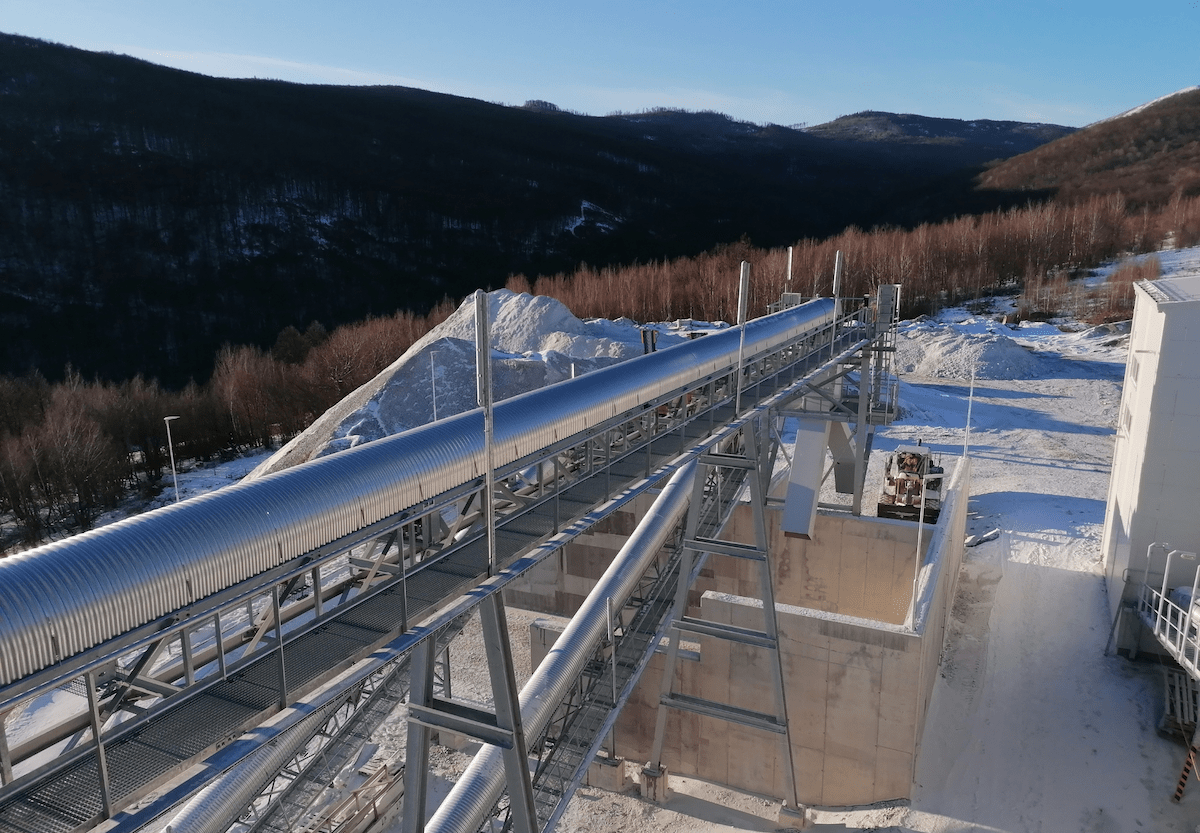Environmental Impact of Talc Mining and Extraction

Talc, a versatile mineral widely used in cosmetics, pharmaceuticals, and manufacturing industries, plays a crucial role in various applications. However, the environmental consequences of talc mining and extraction have recently raised concerns.
The environmental impact of talc can extend beyond mining. Processing and refining talc for various industries may involve the use of energy-intensive methods, contributing to carbon emissions and other environmental pollutants. Efforts to optimize production processes and reduce energy consumption are vital in mitigating these impacts. Let's talk more about the Environmental Impact of Talc Mining and Extraction
Definition of Talc
First, knowing what talc is and its application in different industries is better.So what is talc? Let's explain it here. Talc is a mineral that occurs naturally and belongs to the group of silicate minerals. It is primarily made up of magnesium, silicon, and oxygen, with the chemical formula Mg3Si4O10(OH)2.
Talc is well-known for its softness, smoothness, and lubricating properties, making it a versatile industrial material. The mineral is often found in metamorphic rocks and is usually associated with other minerals such as chlorite, pyroxenes, and amphiboles.
Talc has a wide range of applications, with its most popular use being in the production of talcum powder. Due to its soft and slippery characteristics, talc is used in the cosmetic industry for its ability to absorb moisture and provide a silky feel In addition to cosmetics, talc is used in the manufacture of plastics, ceramics, paints, rubber, and various other products. Its lubricating properties also make it valuable in the production of pharmaceuticals, where it serves as a lubricant in tablet manufacturing.
Despite its widespread use, talc has been the subject of health concerns due to potential asbestos contamination in natural deposits. Regulatory measures and industry standards aim to ensure the safety of talc-containing products for consumers.
What is the Environmental Impact of Talc Mining and Extraction?
Talc, a mineral known for its softness and versatility, is a common ingredient in various consumer and industrial products. While talc manufacture is widely spread, the environmental impact of its mining and extraction processes has raised concerns. This article delves into the intricate ecological consequences of talc mining and extraction.

Mining Operations and Habitat Disruption
Talc is primarily mined through open-pit methods, which involve the removal of overburden to access the talc deposit beneath the Earth's surface.
This process disrupts the natural habitat, leading to the displacement of flora and fauna. The destruction of ecosystems during mining operations can result in long-term environmental consequences, impacting biodiversity and ecological balance.
Soil Erosion and Water Contamination
The removal of soil during talc mining can contribute to soil erosion, negatively affecting the fertility and structure of the land. Sediment runoff from mining sites can contaminate nearby water sources, leading to water pollution.
The harmful chemicals used in the mining process, such as explosives and leaching agents, threaten aquatic ecosystems and may have cascading effects on human communities that rely on these water sources.
Air Quality and Respiratory Health
Talc extraction involves the crushing, grinding, and processing of the ore, which releases particulate matter into the air. These airborne particles, including respirable crystalline silica, can harm air quality. Prolonged exposure to talc dust may harm respiratory health, causing pneumoconiosis and silicosis among miners and nearby communities.
Energy Consumption and Greenhouse Gas Emissions
The extraction and processing of talc require significant energy inputs, contributing to greenhouse gas emissions and climate change. Mining operations often rely on fossil fuels for machinery and transportation, leading to the release of carbon dioxide and other greenhouse gases. As the global push for sustainable practices intensifies, the talc industry faces growing pressure to reduce its carbon footprint and transition toward more environmentally friendly energy sources.

Waste Generation and Tailings Management
Talc mining generates substantial waste, including overburden, discarded ore, and tailings. The disposal of mining waste poses challenges in terms of land use and can contaminate nearby ecosystems. Additionally, the tailings from talc processing may contain residual minerals and chemicals, potentially leaching into the soil and water, further exacerbating environmental concerns.
Reclamation and Rehabilitation Efforts
To mitigate the environmental impact of talc mining, industry stakeholders are increasingly focusing on reclamation and rehabilitation efforts.
These initiatives aim to restore mined areas to a semblance of their original state, promoting the recovery of ecosystems and biodiversity. Proper reclamation practices can minimize the long-term environmental consequences associated with mining activities, but their effectiveness depends on the commitment of industry players and regulatory oversight.
Regulatory Frameworks and Industry Practices
The regulation of talc mining varies globally, and the effectiveness of environmental protections depends on the stringency and enforcement of these regulations.
Some regions have robust frameworks to govern mining activities and mitigate environmental impact, while others may need more stringent oversight. Industry practices, such as adopting sustainable mining technologies and using environmentally friendly processing methods, play a crucial role in minimizing the overall ecological footprint of talc extraction.
Conclusion
The environmental impact of talc mining and extraction is a multifaceted issue requiring careful consideration and proactive measures. From habitat disruption and soil erosion to air and water pollution, the consequences of talc mining extend across ecosystems and communities.
As the demand for talc continues, there is a growing imperative for the industry to embrace sustainable practices, invest in cleaner technologies, and collaborate with regulatory bodies to ensure responsible mining that balances economic interests with environmental stewardship. Balancing the benefits of talc use with the imperative to protect the environment is a critical challenge that requires ongoing commitment and collaboration from all stakeholders involved in the talc supply chain.
